Themed collection Emerging Investigators 2016: Novel design strategies for new functional materials

Profile: Emerging Investigators 2016: novel design strategies for new functional materials
Journal of Materials Chemistry B profiles contributors to the Emerging Investigators issue.
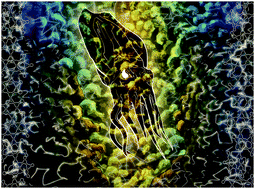
J. Mater. Chem. B, 2016,4, 2995-2998
https://doi.org/10.1039/C6TB90055K
Nano-engineered electro-responsive drug delivery systems
Nano-engineering is exploited to address the slow drug release and low drug loading of electro-responsive drug delivery systems.
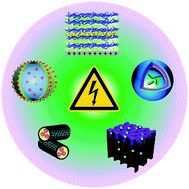
J. Mater. Chem. B, 2016,4, 3019-3030
https://doi.org/10.1039/C6TB00049E
Micro/nanostructured surfaces for self-powered and multifunctional electronic skins
We introduce recent advances in the design of bioinspired micro/nanostructures and 2D/3D structures for the enhancement of energy harvesting and multifunctional sensing properties of flexible electronic skins.
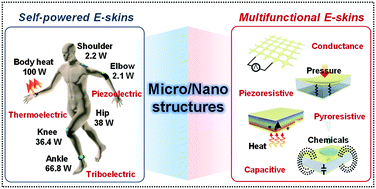
J. Mater. Chem. B, 2016,4, 2999-3018
https://doi.org/10.1039/C5TB02483H
In vitro electrochemical characterization of polydopamine melanin as a tissue stimulating electrode material
The properties of redox active polydopamine melanin (PDM) films as a coating material for tissue stimulation electrodes were evaluated.
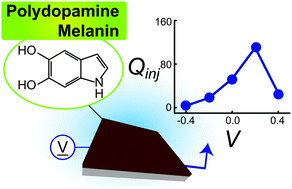
J. Mater. Chem. B, 2016,4, 3031-3036
https://doi.org/10.1039/C5TB02618K
Sensing a Bacillis anthracis biomarker with well-known OLED emitter EuTta3Phen
Dipicolinic acid (DPA) is a distinctive biomarker for bacterial spores. Here, we present the successful demonstration of dramatic Switch-OFF sensing of DPA using an easily synthesised Eu(III) phosphor applied primarily in light-emitting devices. The sensor shows excellent selectivites, and in the presence of water and phosphate is also demonstrated to be effective.
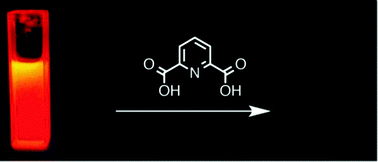
J. Mater. Chem. B, 2016,4, 3043-3045
https://doi.org/10.1039/C5TB02469B
Fluorinated smart micelles as enzyme-responsive probes for 19F-magnetic resonance
Labeling smart PEG–dendron hybrids with fluorine-containing groups transform their micelles into enzyme-responsive probes for 19F-magnetic resonance.
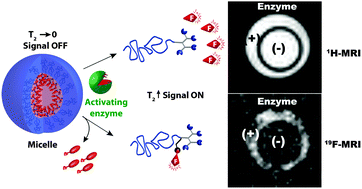
J. Mater. Chem. B, 2016,4, 3037-3042
https://doi.org/10.1039/C5TB02445E
Heparin-stabilised iron oxide for MR applications: a relaxometric study
Heparin stabilisation of Fe3O4 nanoparticles engenders exceptional stability, enhanced relaxation due to interparticle interactions, and prevention of protein-adsorption triggered thrombosis.
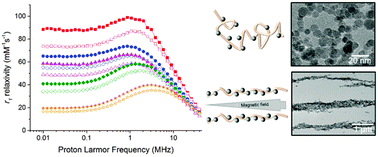
J. Mater. Chem. B, 2016,4, 3065-3074
https://doi.org/10.1039/C6TB00832A
Evaluation of the direct effects of poly(dopamine) on the in vitro response of human osteoblastic cells
Functional poly(dopamine) coatings promise to become an efficient strategy to endow biomaterials with enhanced bioactive properties.

J. Mater. Chem. B, 2016,4, 3145-3156
https://doi.org/10.1039/C5TB02510A
Silica core–shell particles for the dual delivery of gentamicin and rifamycin antibiotics
Increasing bacterial resistance calls for the simultaneous delivery of multiple antibiotics.

J. Mater. Chem. B, 2016,4, 3135-3144
https://doi.org/10.1039/C6TB00281A
Controlling the ion release from mixed alkali bioactive glasses by varying modifier ionic radii and molar volume
Modifier ionic radius controls ion release from bioactive phospho-silicate glasses via silicate network compactness.
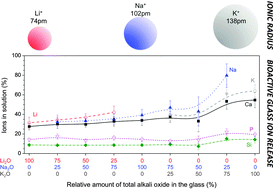
J. Mater. Chem. B, 2016,4, 3121-3134
https://doi.org/10.1039/C5TB02426A
Bacterial viability on chemically modified silicon nanowire arrays
Multi-functional silicon nanowires (SiNWs) arrays: (I) nanostructure topography in the form of SiNWs, (II) covalent chemical modification with APTES and (III) incorporation of chlorhexidine digluconate.
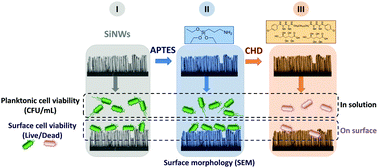
J. Mater. Chem. B, 2016,4, 3104-3112
https://doi.org/10.1039/C6TB00460A
Near-infrared triggered generation of reactive oxygen species from upconverting nanoparticles decorated with an organoiridium complex
We developed an upconverting nanoparticle capable of (up)converting near-infrared excitation light to UV to sensitize an organoiridium complex for the production of reactive oxygen species.
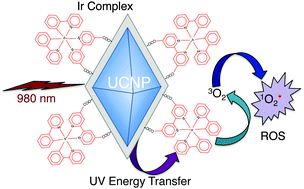
J. Mater. Chem. B, 2016,4, 3113-3120
https://doi.org/10.1039/C5TB02555A
Boronic acid-modified poly(amidoamine) dendrimers as sugar-sensing materials in water
High-affinity carbohydrate receptors were developed by appending boronic acids to the surface of PAMAM dendrimers. These multivalent hosts were used to discriminate simple sugars in neat water using pattern recognition and optical spectroscopy techniques.

J. Mater. Chem. B, 2016,4, 3094-3103
https://doi.org/10.1039/C5TB02530C
Microgels with tunable affinity-controlled protein release via desolvation of self-assembled peptide nanofibers
We demonstrate an approach to fabricate microgels from self-assembled peptide nanofibers via desolvation. Proteins can be co-desolvated with nanofibers to create protein-loaded microgels. Modifying nanofibers with a protein-binding ligand provides tunable affinity-controlled protein release.
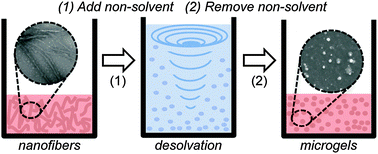
J. Mater. Chem. B, 2016,4, 3054-3064
https://doi.org/10.1039/C5TB02446C
Microfluidically fabricated pH-responsive anionic amphiphilic microgels for drug release
Novel amphiphilic microgels with hydrophobic and hydrophilic monomer units on the polymer chains were fabricated with an on-chip polymerisation methodology using a novel chip design.
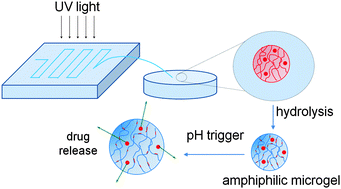
J. Mater. Chem. B, 2016,4, 3086-3093
https://doi.org/10.1039/C5TB02378E
Characterization and optimization of pH-responsive polymer nanoparticles for drug delivery to oral biofilms
Corona and core molecular weights of p(DMAEMA)-b-p(DMAEMA-co-BMA-co-PAA) block copolymer micelles can be tuned to enhance drug release in response to acidic milieus consistent with oral biofilms.
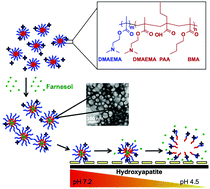
J. Mater. Chem. B, 2016,4, 3075-3085
https://doi.org/10.1039/C5TB02054A
Glycosylated gold nanoparticle libraries for label-free multiplexed lectin biosensing
Glycosylated nanoparticle libraries are developed to enable ‘barcode’ sensing of lectins and toxins.
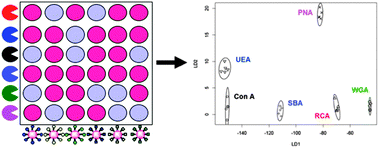
J. Mater. Chem. B, 2016,4, 3046-3053
https://doi.org/10.1039/C5TB01994J
About this collection
Journal of Materials Chemistry B is proud to present this themed issue highlighting 2016’s rising stars of materials chemistry research. This issue gathers the very best work from materials chemists in the early stages of their independent career, with a special focus on novel design strategies for new functional materials.
Each contributor was recommended by our prestigious Editorial Board as carrying out work with the potential to influence future directions in materials chemistry. Congratulations to all of those who feature on their important work so far in the field of materials for biology and medicine.